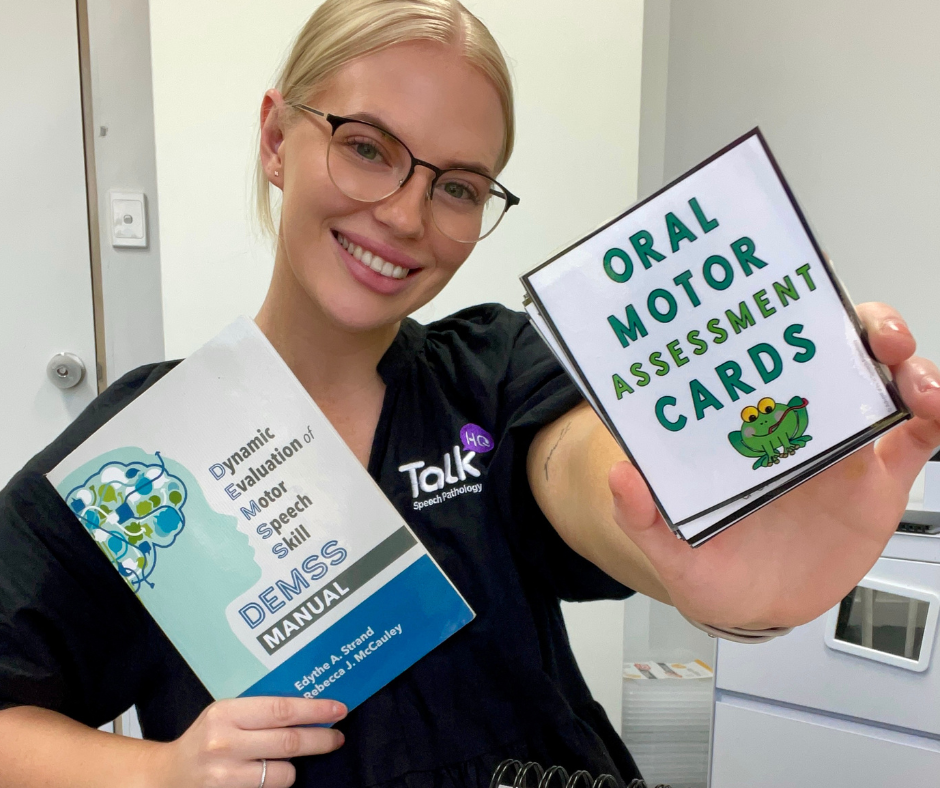As a paediatric speech pathologist, I help children with speech sound disorders. Occasionally, I may suspect a client has Childhood Apraxia of Speech (CAS). At TalkHQ, we have a three-part, in-depth assessment process so we can use clinical reasoning to drive our treatment management. I wanted to ensure I was delivering evidence-based practice when assessing CAS. Therefore, I researched what assessments to use if I suspect CAS. This blog outlines four ‘must do’ assessments to support the diagnosis.
What is CAS?
CAS is a motor speech sound disorder. It affects a child’s ability to plan and program motor movements for speaking. CAS is the label for a type of speech sound disorder. Clinicians investigate CAS to help plan evidence-based therapy. It is not a medical diagnosis. A speech pathologist is qualified to diagnose CAS.
After a period of therapy, you may suspect your client has CAS.
1. Speech sample in free play, and structured play.
Undoubtedly, it is important to assess children’s speech during play. Why? To assess the child’s speech beyond the word level. Furthermore, it will help you observe any CAS characteristics within play. You can also structure the play to discover any sounds which may need therapy.
2. Articulation and/or phonology assessment
The DEAP is a great tool to include in your CAS assessment battery. Why? To assess the nature of the child’s speech errors. Children with CAS may present with phonological processes. In addition, they may present with phonological awareness difficulties. Therefore, it is important to identify which errors are motor based, and which are phonological. This will impact the therapy approaches you use to treat CAS.
3. Structural/functional assessment
An oral motor examination (OME) is an important assessment if you suspect CAS. Why? You want to see the range and strength of the lips and tongue. Also, you assess the sequencing of motor movements. It also helps you rule out another underlying diagnosis, such as dysarthria. Some exercises to investigate this include: kiss, cough, blow. Furthermore, the OME helps you assess the child’s intentional motor movements. This helps support your decision about the presence or absence of a structural/functional condition.
4. Motor speech examination
At TalkHQ, we use motor speech examinations to help assess CAS. One assessment is the DEMSS Why? This assessment provides both a quantitative and qualitative analysis of the child’s speech sound disorder. Also, it is a diagnostic tool. It tells you if CAS is present or not. Additionally, this assessment also provides you with the severity of the presence of CAS.







